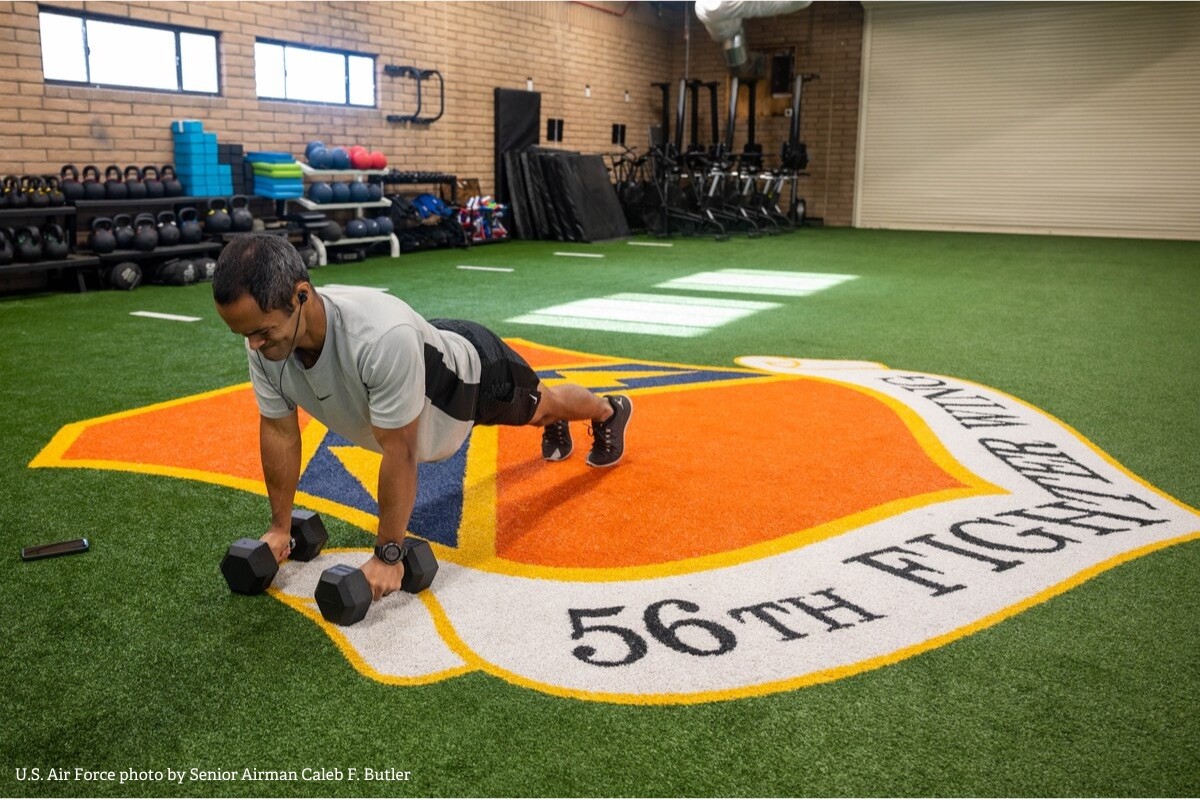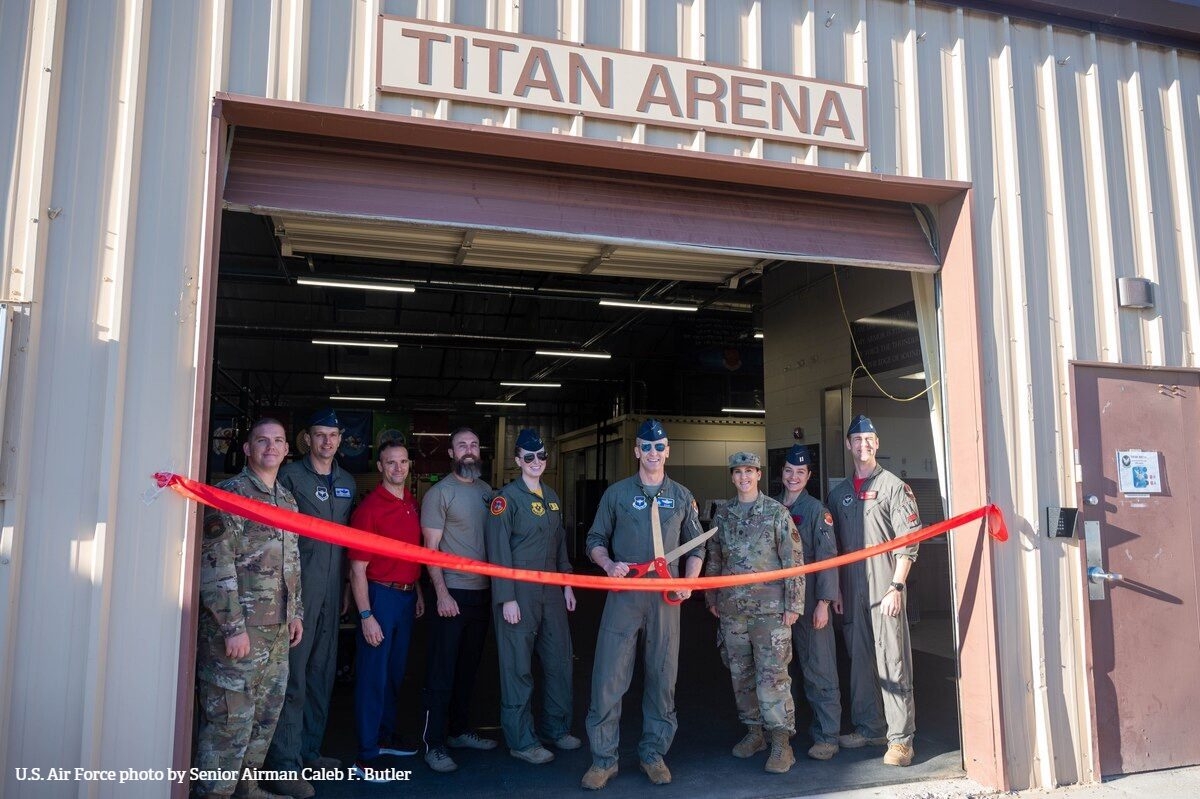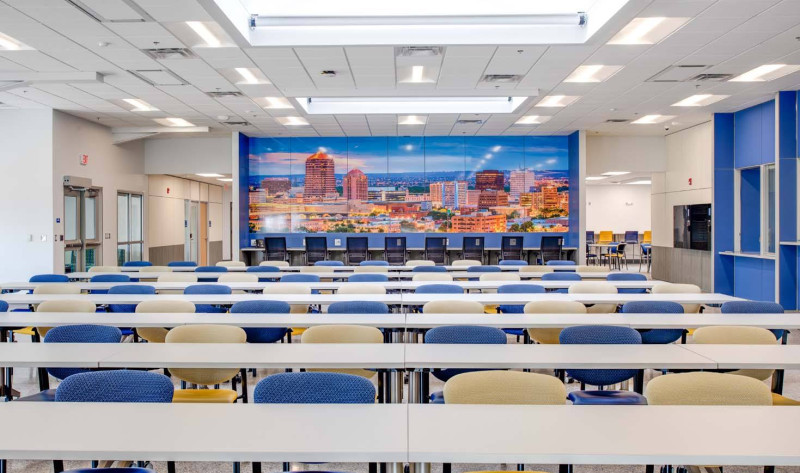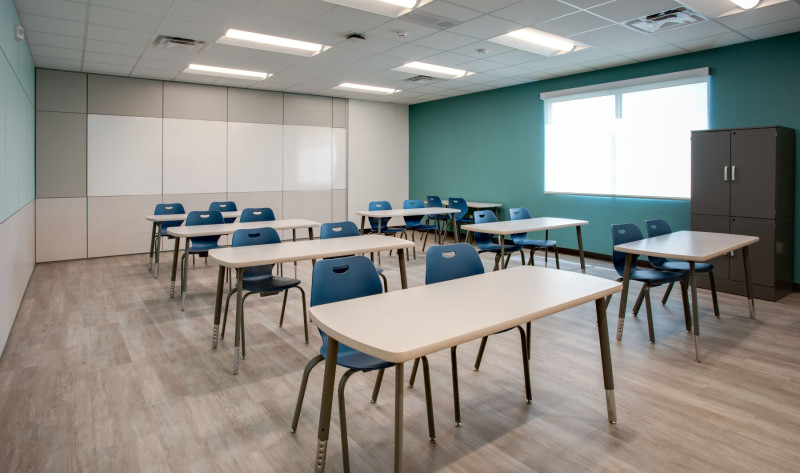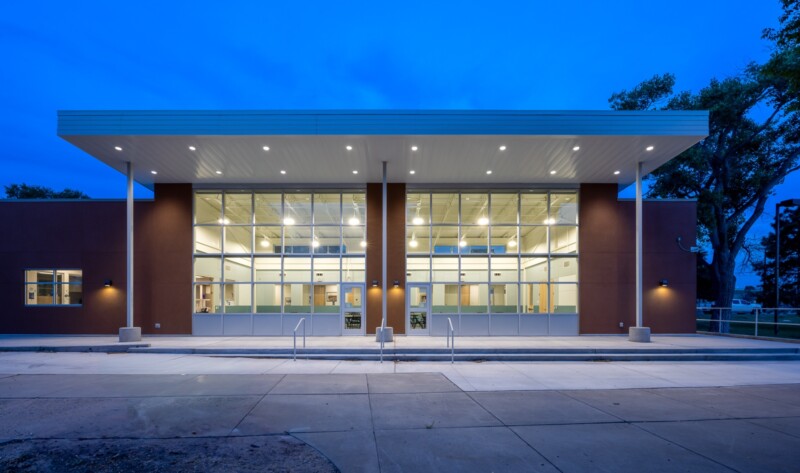Solution: Human Performance Facilities
TITAN Arena Human Performance Facility
- Location: Maricopa County, AZ
- Facility Size: 14,150 SQ FT
You Know What They Say: “An Aircraft Is Only as Good as the Pilot Flying It.”
It was such a privilege to be able to use our SBIR Phase III award to complete human performance renovations at Luke Air Force Base and take part in the health and human performance innovation for the 309th Fighter Squadron. The squadron’s Tactical Integrated Training and Nutrition (TITAN) Arena houses the 56th FW Human Performance Team, which supports holistic performance improvement across physical and psychological domains to 210 Luke AFB fighter pilots.
A recent study found that 89% of fighter pilots reported physical pain that had a significant impact on their flight mission. Sixty-three percent of these pilots reported pulling out of turns early because of this pain. Maximizing the lethality, performance, and longevity of these fighter pilots requires a program that incorporates cognitive performance, emotional resiliency, strength and conditioning, performance nutrition, and physical therapy. Holistically healthy pilots are the ultimate objective, because even in a highly technical environment like a 5th generation fighter jet, ensuring the safety and well-being of the human system must be the number one priority.
Renovations include 14,150 square feet of nutrition and exercise space, including a complete indoor workout space, nutrition center, office spaces, PT center, and lockers/bathrooms. The renovations brought the existing facility up to modern standards for the latest revised pilot training protocols. They were specifically aligned to the new TITAN pilot training strategy that required new types of equipment, technology, and functionality, all within the existing building.
Due to the use of the SBIR Phase III, Luke AFB was able to implement these extensive renovations without the headaches associated with the traditional military construction process. It was completed at a cost lower than the average cost at installation, despite the fact that it occurred during a time of significant construction supply chain constraints and cost increases.
More Case Stories
Design a better ending.
Call 800.244.1452
"*" indicates required fields

